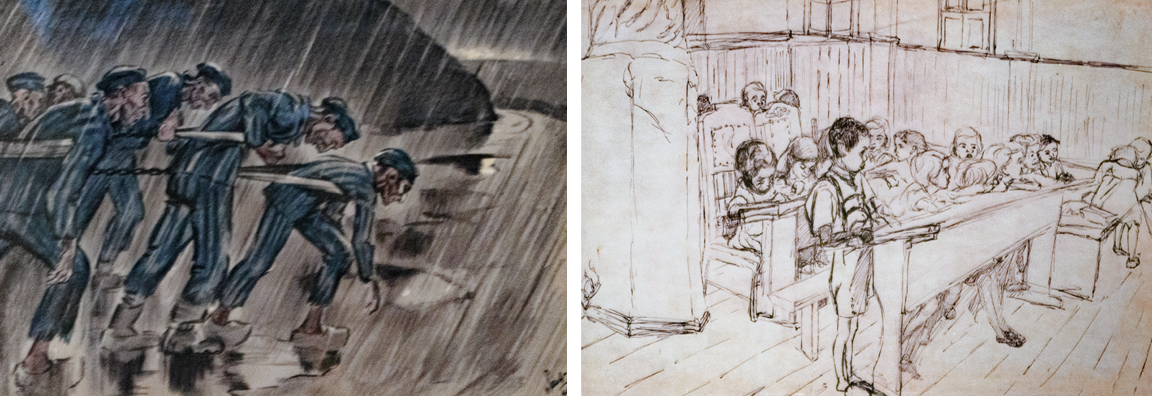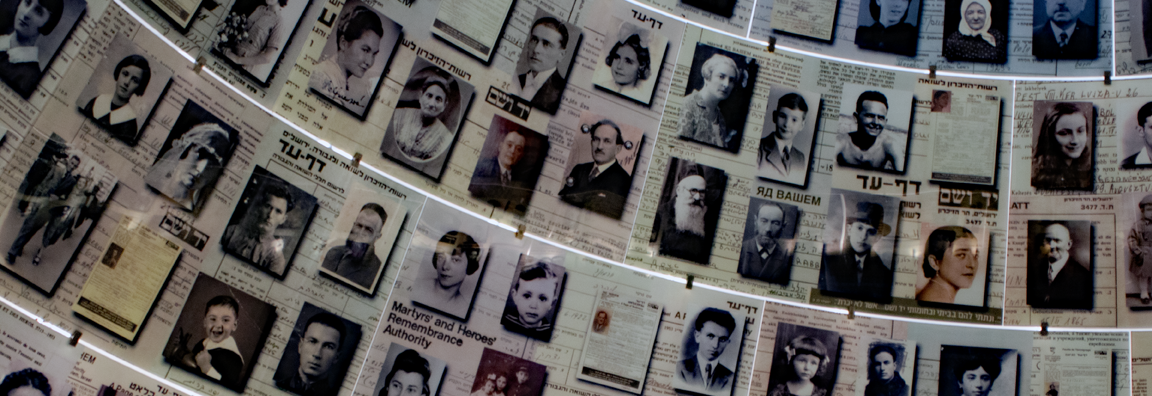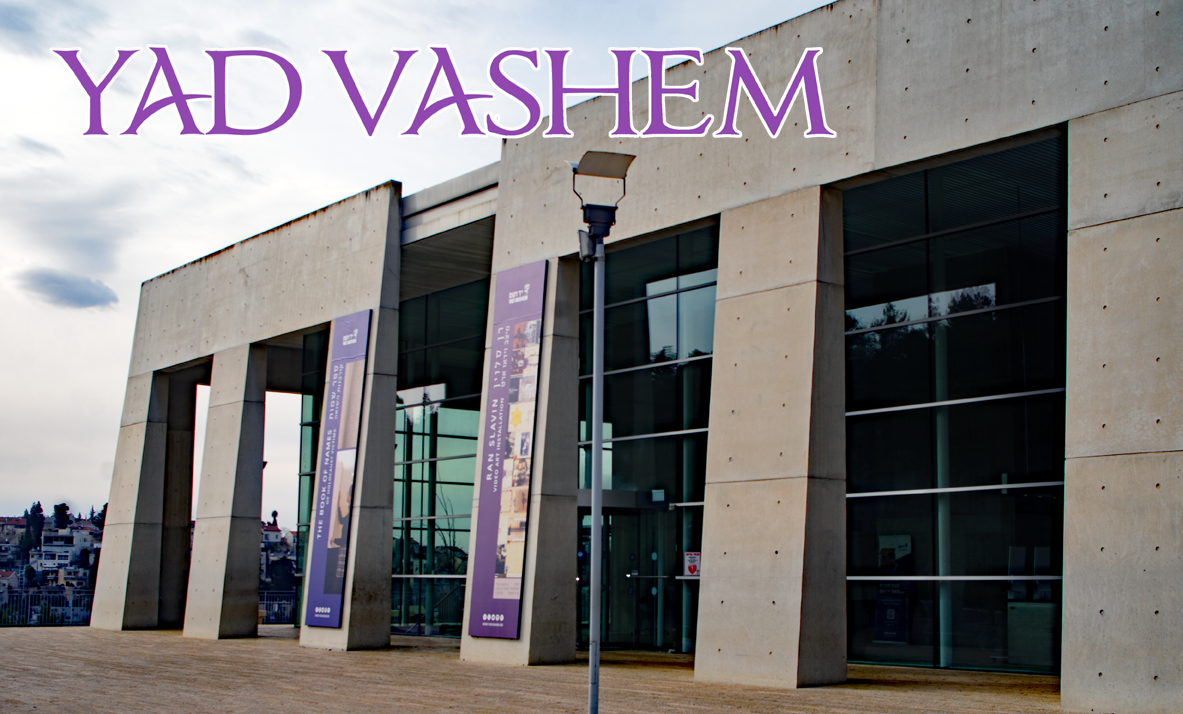Yad Vashem, Jerusalem
It’s
always
good to have a guide when visiting a site.
It’s also very possible to get portable devises
that can guide you through an exhibition.
However, on this trip to Yad Vashem, I had the
privilege to go with my friend Zipi Mizrachi whose family
experienced the horrors of the Holocaust in both Poland and
Hungary. Zipi
had not been to the museum in twenty years.
It’s just such a heart-wrenching experience for
her. But, she
wanted me to see the museum and learn a little of her story. As we passed
through exhibits about the Warsaw Ghetto, Auschwitz,
Treblinka, and more, Zipi let me know which of her family
members had been in the various locations.


Of course, we were not the only two to walk along the exhibition in silence. There were many young people from the Israeli Defense Force visiting that day. Zipi said they gave her such hope and inspiration. These young people were the future of her country as they walked through the memories of its past.
One
of the first exhibitions dealt with Warsaw, Poland.
The uprising of the Polish Resistance infuriated
the Nazis. In
1944, the Nazi leaders decided to destroy the city in
retaliation. Over
a period of three months, Warsaw was demolished and 650,000
citizens were deported to a labor camp south of the city. In the exhibition
at Yad Vashem, actual cobblestones, street car lines, and a
lampstand from Warsaw were used to create the setting.

Top right: Street view of Warsaw Bottom: Entrance to Auschwitz with remnant of train car, Work Sets You Free

I instantly recognized the entrance to the exhibition about Auschwitz. There was an arch over the gateway to the death camp that read, “Arbeit Macht Frei”, which in English means, “Work Sets You Free”. Located in southern Poland, Auschwitz was the largest of the German concentration and death camps. Prisoners were either gassed to death, worked as slave laborers, or experimented upon by Josef Mengele. It is estimated that 1 million people lost their lives in Auschwitz.
As
an artist, I am inspired by artists in the concentration
camps who felt the need to express themselves and document
what they saw. There
were harsh punishments if caught creating art that was not
ordered by those in authority.
That didn’t stop the artists from doing what
artists do. Some
drawings were hidden in secret locations while others were
smuggled out of the camps into the outside world.
There were also works of artists who survived the
war and later created more art from their experiences. One such survivor,
Henri Pieck, 1895–1972, drew the illustration of Jews
pulling a wagon in 1945.

Art
from Concentration Camp Artists

Words can be so very powerful. Quotes from survivors, journal passages, and newspapers shared the innermost thoughts of both the Nazis and those who were so oppressed.
The
wild grasses rustle over Babi Yar.
The trees look ominous, like judges.
Here all things scream silently.
Yevgeny Yevtushenko, Babi Yar
We
must annihilate the Jews wherever we find them, wherever it
is at all possible, in order to maintain the whole structure
of the Reich here [in Poland].
Hans Frank, Governor General of the
Generalgouvernement, December 16, 1941
Anyone
who
could see the expulsion of Warsaw with his own eyes would
have his heart broken.
The Ghetto has been turned into an inferno … people
are being hunted down in the streets like animals in the
forest … hiding in nooks and crannies, in cellars and in
attics … Their cries and wails tear the heart out.
The children in particular rend the heavens with
their cries.
Chaim
Aharon Kaplan, diary, July 27, 1942

Faces of some of the Victim of the Holocaust in the Hall of Names
One of the most impactful parts of the entire museum was the Hall of Names. The placard reads, “The Hall of Names is the memorial entrusted with preserving the names of the Holocaust victims in perpetuity. The victims, almost all of whom did not receive a Jewish burial, bequeathed us the imperative to remember their names. Since its establishment, Yad Vashem has been fulfilling this testament by providing them a memorial and a name. The Hall of Names houses Pages of Testimony memorializing the names and biographical details of Jews who were murdered in the Holocaust. It is an ongoing effort to retrieve all of the names … of each man, woman, and child who was lost; an entire Jewish world that was obliterated.”
Visiting Yad Vashem is so very sobering. It is so hard to understand the horror. But for Zipi, there was light at the end of the dark tunnel. Both of her grandfathers survived the Holocaust, one in Hungary and the other from Poland fled into the Soviet Union. They married and had children. Their children had children. The grandfather from Hungary had 80 grandchildren! The one from Poland had over 130! It is the very best kind of revenge over the Nazis who tried to exterminate their entire population.
